I have long been fascinated by the influence of World War II on British thriller writers, but have finally abandoned my campaign to influence commissioning editors in the subject. I will instead share a few of my early thoughts through this occasional column and highlight novels written before, during and after the war. I will concentrate mainly on British thrillers because that is what I was brought up reading (with some notable exceptions) and thrillers rather than straightforward war stories, however thrilling they may be. To give an example, I would class Alistair MacLean’s HMS Ulysses as a superb war story, whereas his South By Java Head is a thriller, which happens to be set during the war.Many of the authors covered will be better known for their crime or detective fiction, but as author Graham Hurley (whose work will get very honourable mention in a future column) has said: WWII was the biggest crime scene in history. Herewith more novels featuring spies, crooks, amateur detectives, policemen and lots of nasty Nazis, which were written and published during the war. Interestingly, three feature main characters suffering amnesia and two have British spies in Nazi Germany taking orders from Adolf Hitler personally!
MANNING COLES – Drink To Yesterday / A Toast To Tomorrow (1940)
Manning Coles was the pen-name of a writing partnership of neighbours Adelaide Frances Manning (1891-1959) and Cyril Henry Coles (1899-1965) who had an instant hit with Drink To Yesterday, the spy story set in WWI which introduced Thomas Elphinstone Hambledon, who was to have more than twenty further fictional adventures throughout WWII and beyond. Initially, Tommy Hambledon was the senior British spy in an undercover network operating inside Germany during World War I, running a young, trainee field agent who is the tragic central character of the book. Believed missing-in-action and thanks to a thirteen year period of amnesia, Hambledon turns up in the sequel, A Toast To Tomorrow ideally placed in Berlin in 1933 to fight the emerging Nazi government as well as settle an old score. Under deep cover, he becomes a favourite of Hitler and attracts the enmity of Dr Goebbels, pulling few punches about the corruption of the new regime and the persecution of the Jews.
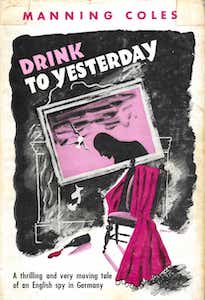
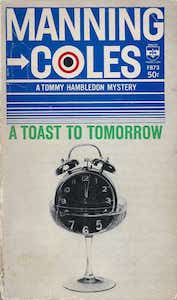
The very credible spycraft described was no doubt due to Coles having been (a very young) British agent in Germany during that first war and the books are brutally honest about the stresses of an undercover spy in enemy territory, what’s more, a spy who makes mistakes both personally and professionally. A much under-rated milestone in British spy fiction, dotted with humour, credible characters, suspense and even tenderness.
GRAHAM GREENE – The Ministry of Fear (1943)
Novelist Henry Graham Greene (1904-1991) produced his wartime “entertainment” The Ministry of Fear while working for MI6. The novel was quickly filmed by Fritz Lang, starring Ray Milland, though without the core section of the book where the protagonist suffers from amnesia following a bomb blast whilst on the trail of a Nazi spy ring who (ludicrously) hide secret microfilm inside a cake put up as a prize at a local fete. In truth, the spy hunt element is secondary to the overall atmosphere of paranoia which continues when the protagonist and his love interest both have to face a future in the constant fear of awful secrets from their pasts being uncovered.
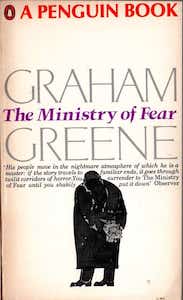
Arguably Greene’s greatest contribution to boosting morale in WWII was his 1940 short story The Lieutenant Died Last, which formed the basis of the 1942 film Went The Day Well. A unit of German commandoes – pathfinders for a Nazi invasion – take over the idyllic English village of Bramley End (actually Turville near High Wycombe) but are thwarted by the brave villagers. Rousingly patriotic and, for its time, brutally honest in its violence, the film was, four decades later, thought to have partly inspired that international best-seller The Eagle Has Landed, though it was a claim denied by the author.
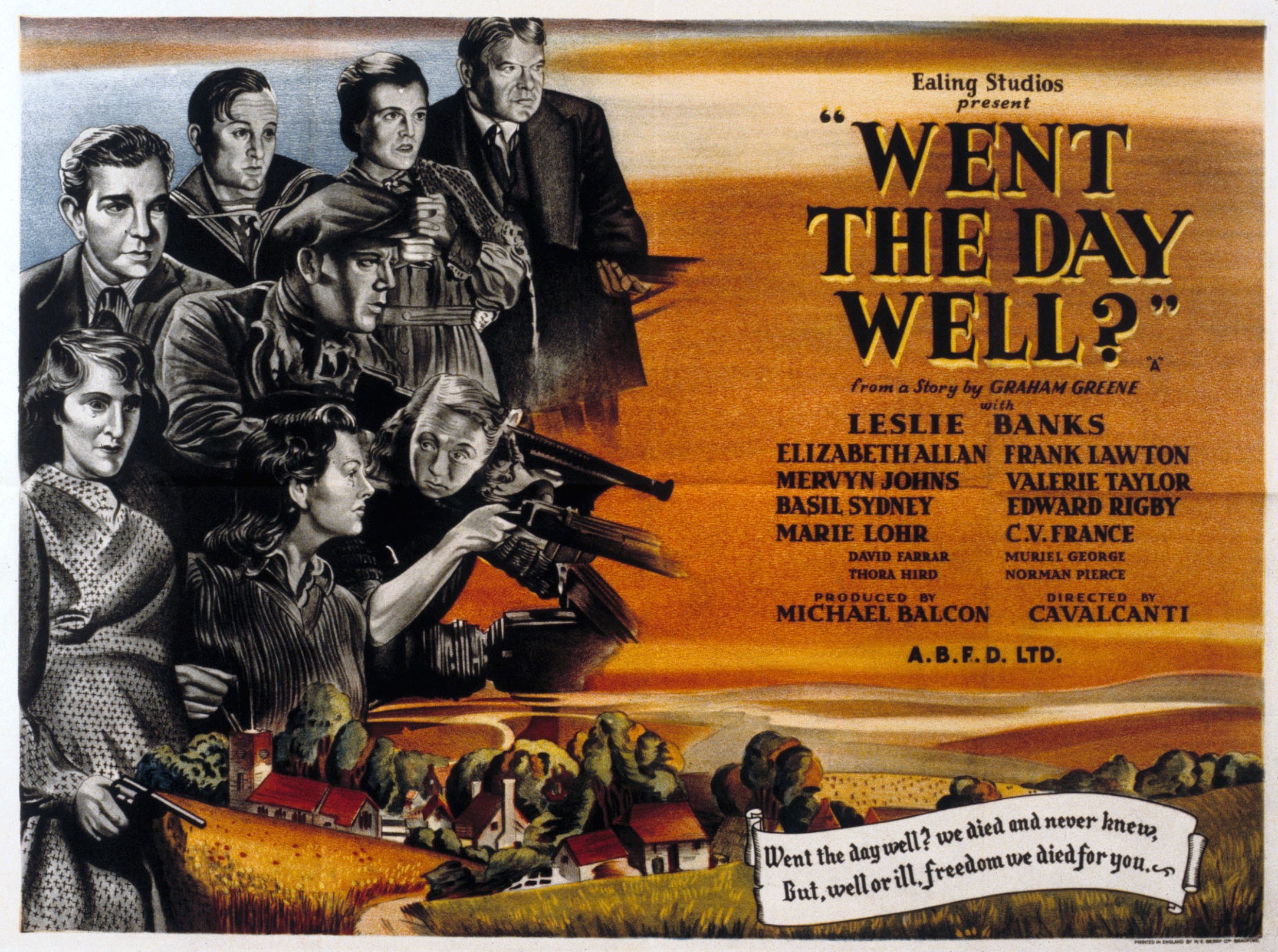
MARGERY ALLINGHAM – Traitor’s Purse (1941)
Margery Allingham (1904-1966) is responsible for possibly the best-known wartime thriller to have amnesia as a central driver of the action as her legendary detective Albert Campion is in such an amnesiac fog in Traitor’s Purse right from the start that he can not only not remember the conspiracy he is supposed to be uncovering but whether he has forgotten he got married. At the core of the book is the thwarting of a German plot to forge bank notes and wreck the wartime British economy. Allingham started writing the book in late 1939 and could not possibly have been aware that there actually was a Nazi plan to do just that.
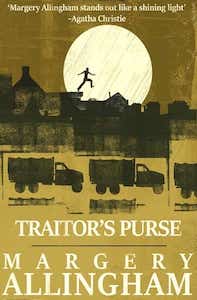
Yet Margery’s main contribution to the war effort was in her non-fiction account of wartime life in her Essex village, The Oaken Heart (1941), originally written for an American audience to encourage the USA to enter the war.
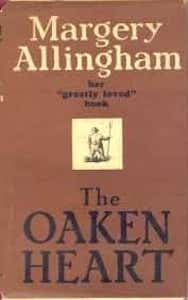
Allingham’s detective hero (like other fictional heroes) spent the war away on secret missions for King and country and Albert Campion only returned to sleuthing in March 1945 in Coroner’s Pidgin. At the end of that book, Albert returns from ‘abroad’ to discover he is a father. Oddly, this revelation was removed from the American edition of the book (known as Pearls Before Swine) – presumably on grounds of national security.
ERIC AMBLER – Journey Into Fear (1940)
Widely regarded as a major influence on British thriller-writing, Eric Clifford Ambler (1909-1998) set a new standard with his first six novels, four of which were filmed, before he volunteered to serve in the wartime army, ending his military career in the army’s Film and Photographic Unit. Journey Into Fear was set in the period before Italy had joined the war and features an innocent British engineer (a typical Ambler hero) on a business trip to Istanbul who becomes a target for German agents. With the questionable aid of Colonel Haki of Turkish security, the engineer attempts to get home by sea on a ship bound for Genoa, but can he trust any of his fellow passengers? Of course he can’t.
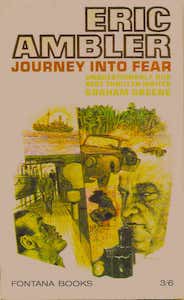
It was to be Ambler’s last novel for some time as after the war, Ambler concentrated on scriptwriting, including the notable war films The Cruel Sea and The Purple Plain. This second career had begun during the war with his co-scripting of the morale-boosting The Way Ahead with Peter Ustinov in 1944.
PETER CHEYNEY – The Dark Street (1944)
Reginald Evelyn Peter Southouse Cheyney (1896-1951) produced at least 16 books and clocked up sales of two million copies a year during WWII. Having established himself with tough-guy, faux-American tales of gangsters and private detectives, he turned to espionage (or rather counter-espionage) in his ‘Dark’ series featuring an ad hoc ensemble cast of interchangeable tough-guys (‘tough’ was a favourite word) of various nationalities working under the direction of the rather shadowy Peter Quayle.
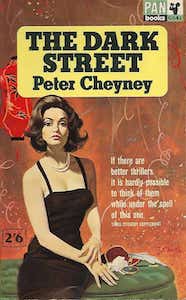
Cheyney was said to have dictated (‘acted out’) his stories to a secretary who then typed them up from her short hand. They certainly read that way. Not a page goes by without somebody lighting a cigarette and there seems to be no wartime shortage of gin, brandy or whisky, which are copiously consumed. Much drinking is done in West End clubs called things like The Yellow Cantaloupe and in the improbably-named pub The Green Headdress and even if the plots are bit shaky, the ‘Dark’ series did bring a ruthless realism to the spy story, where enemy agents (known as ‘students of Mr Himmler’) are rooted out and eliminated. And they were extremely popular, circulating widely in Scandinavia. Legend has it that a Swedish publisher smuggled Dark Duet (1942) into Paris while the city was still occupied and it was the first British novel to be openly sold on liberation in 1944. The last in the series, Dark Bahama in 1950, was an uncanny presaging of Ian Fleming’s Live and Let Die.
FRANCIS BEEDING – The Secret Weapon (1940)
‘Francis Beeding’ was the writing partnership of John Leslie Palmer (1885-1944) and Hilary St George Saunders (1898-1951), Oxford graduates who worked for the League of Nations in the 1920s and were prolific and highly successful authors of detective stories and thrillers throughout the 1930s. Their thrillers, featuring the activities of thinly-disguised European political movements, usually centred on Colonel Alistair Granby, the bluff, British spymaster who would recruit willing if amateur agents and cheerfully send them into enemy territory.
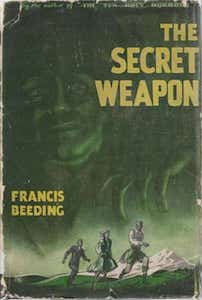
With the outbreak of war, the gloves were off and Not A Bad Show (better known under its American title The Secret Weapon) involves the rescuing of an anti-Nazi scientist from Buchenwald concentration camp and a hair-raising escape across Austria into Switzerland via a meeting with Hitler in Berchtesgaden! As with most Beeding thrillers, the action comes fast and furiously, involving U-boats, a manhunt through the streets of Vigo in neutral Spain, mountain climbing and a rather improbable (in drag) train journey across Germany. There’s a lovely touch at the end when the recued scientist, who has developed a new explosive, is safe in England. He now works for the British war effort but details of whereand how are redacted for security reasons. There was, after all, a war on.
NGAIO MARSH – Colour Scheme (1943)
Edith Ngaio Marsh (1895-1982), one of the four ‘Golden Age’ queens of crime, was a New Zealander and during the war had her sensitive detective sleuth,Superintendent Roderick Alleyn seconded there to aid local police on the track of German agents.
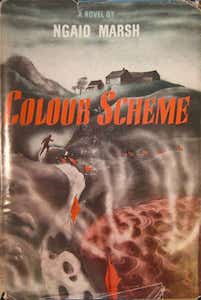
Is someone, possibly a bucolic member of the Harpoon Country Club, signalling to Japanese submarines lying in wait for Allied shipping off Harpoon Inlet? Or is it an insult to local Maori tradition that has resulted in the local volcanic mud springs being used as a murder weapon. A book notable for its sympathetic treatment of native New Zealanders and, when filmed for television, for starring George Baker (known for his portrayal of Ruth Rendell’s Inspector Wexford) asAlleyn.
HAMMOND INNES - His four Wartime Thrillers
In the three years before WWII Ralph Hammond Innes (1913-1998) wrote four science fiction novels which were said to have earned him £120 in total. In the 1950s his publishers boasted he was earning £120 a page as several of his adventure thrillers began to be adapted for the cinema. His reputation as a spinner of ripping adventure stories, usually with very ordinary but very British heroes, was born out of his wartime output just before and during military service.
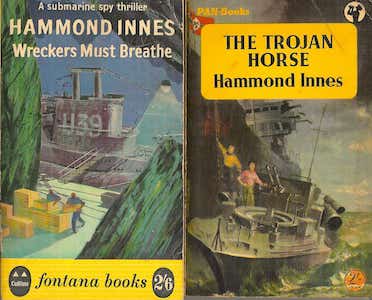
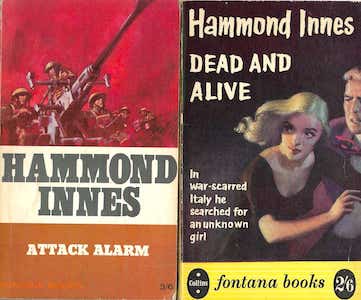
Wreckers Must Breathe (1940), written on a summer holiday in 1939, raised the terrifying prospect of secret U-boat bases in sea caves on the Cornish coast and gave a handy guide to incapacitating one using fire and a remembered school chemistry lesson. The Trojan Horse (1940) followed almost immediately, the plot revolving around a new type of diesel engine, plans for which have beensmuggled out of Nazi Germany and was noted for its chase scenes in rat-infested London sewers. Attack Alarm (1941) combined standard thriller elements withthe equally dangerous daily life of anti-aircraft battery guarding an RAF fighter station during the Battle of Britain, the detailed background gleaned from Innes’ own initial wartime posting. He was later to serve in Italy which was to provide the backdrop to several of his novels, including Dead and Alive (1945) where a veteran of the Anzio landings repairs a damaged landing craft in Cornwall and sales back to Naples to find a lost wartime lover. An early taste of the seafaring adventures later to become an Innes trademark.
Hammond Innes was to become the major British thriller writer of the 1950s until overtaken by Alistair MacLean. So impressive were his sales that Ian Fleming demanded equivalent first edition print runs from his publisher for his early James Bond books, but without success.

OTHER RIPSTER REVIVALS:
#1: Peter Dickinson
#2: David Dodge
#3: Nevil Shute
#4: War Stories (Part 1)
#5: Walter Satterthwait
#6: War Stories (Part 2)